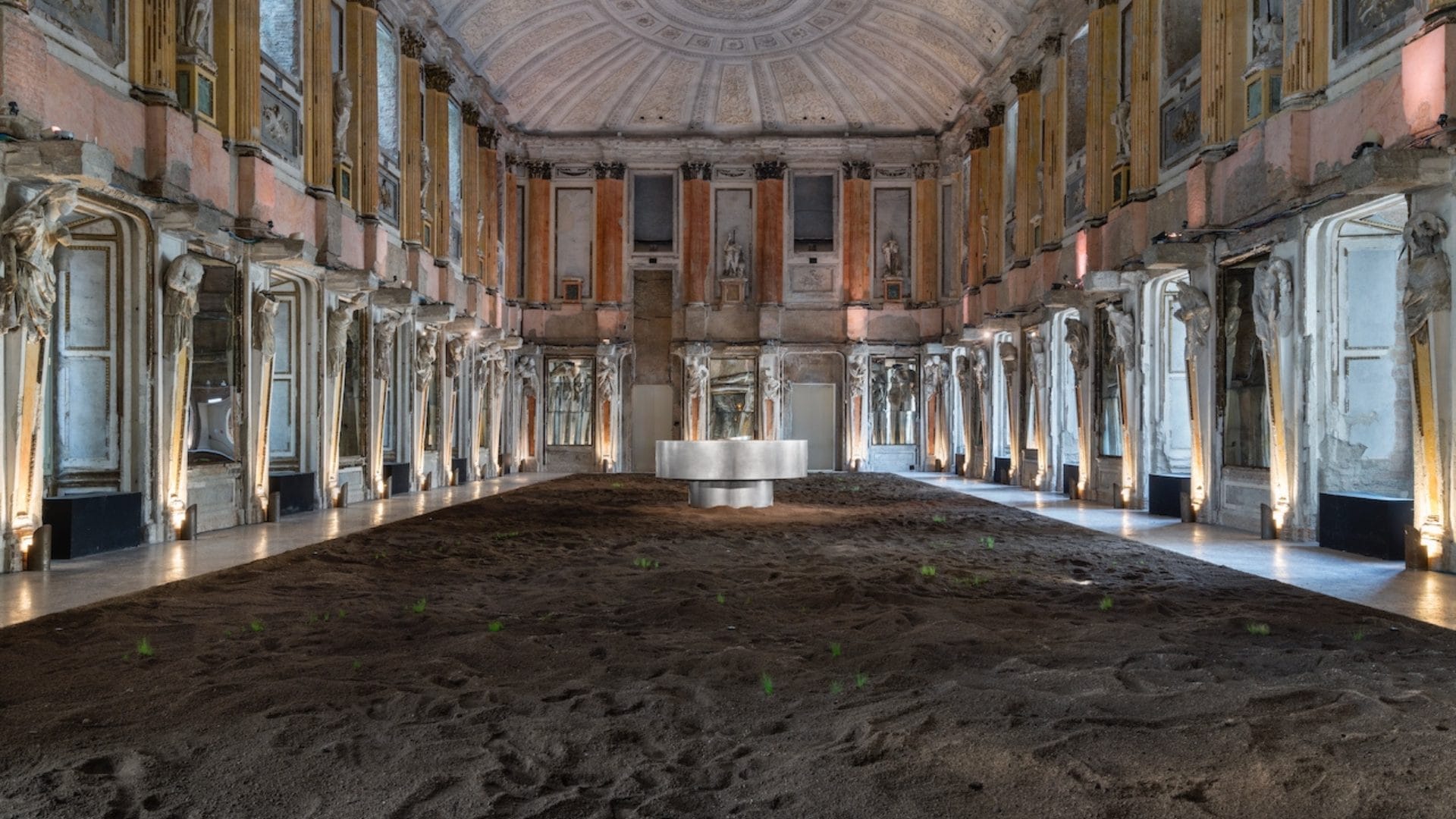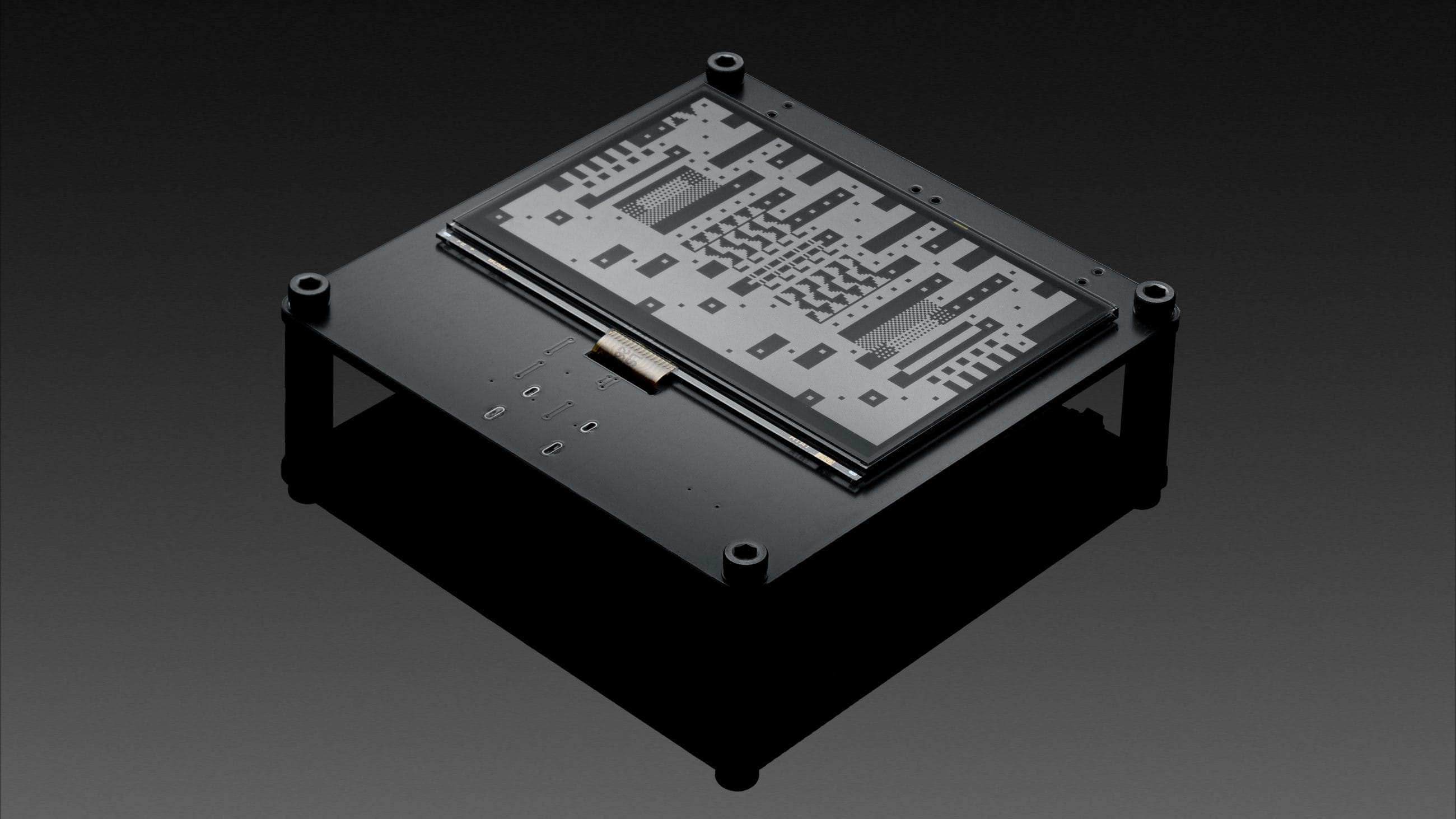
Andreas Gysin’s Digital-Physical Continuum
Andreas Gysin is a Swiss-born graphic designer and generative artist that stands at the intersection of art and technology, crafting groundbreaking code-driven art that transcends the boundaries of traditional art and design.
His artistic journey, rather than following a linear path, signifies a continuous dialogue between the tangible and the intangible, challenging and expanding the conventional understanding of art’s scope and potential. A cyclical path, that serves as a paradigmatic narrative for contemporary art, underscoring the evolving nature of artistic mediums and the necessity for artists to adapt, explore, and innovate continually.
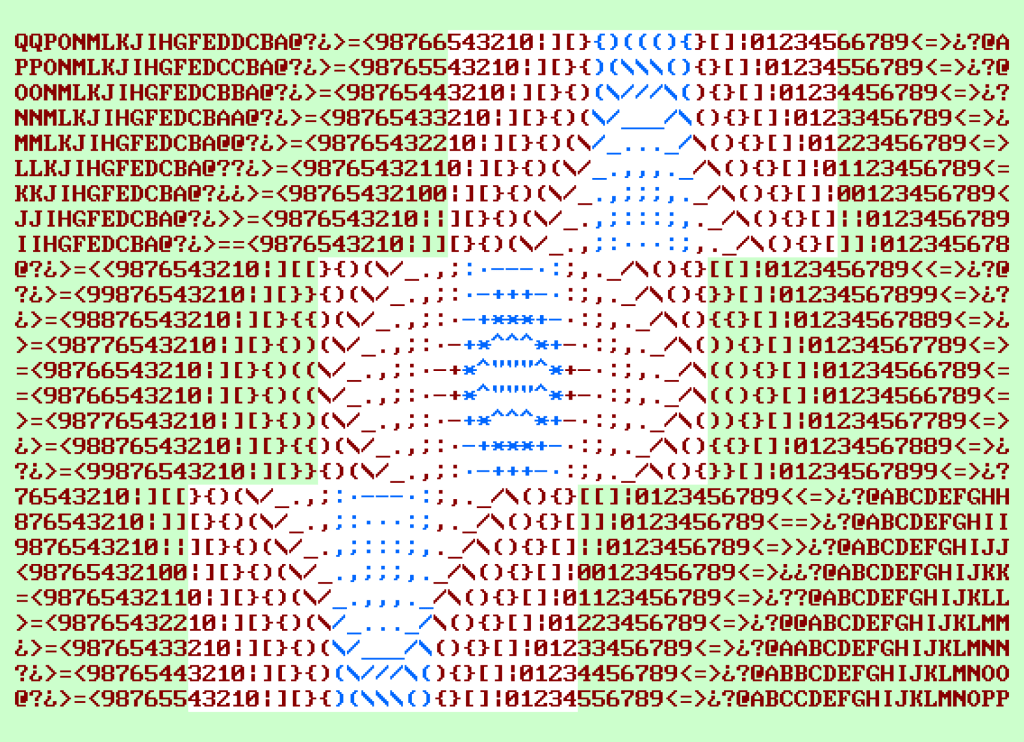
Canvas Unbound: Andreas Gysin’s Art Across Mediums
Andreas Gysin’s artistic journey is one of continuous evolution and collaboration, deeply rooted in his early passion for installations. This initial chapter of his career was characterized by a rigorous process of research, experimentation, analysis, and discovery — elements that have been the cornerstone of both his artistic and commercial projects, shaping his approach to the creative process.
Discover the full Fakewhale Curation
Working closely with Sidi Vanetti, a relationship forged during their time at the University of Applied Sciences and Arts in Ticino, Gysin developed an approach driven by collaborative creativity. Their partnership is not merely about combining individual talents but about synthesizing their shared vision into a cohesive artistic language. This ongoing collaboration proved to be instrumental in Gysin’s development over the years, blending the disciplines of visual communication, architecture, and technology into a unified artistic expression.
The transition from physical to digital installations also marks a significant phase in Gysin’s career. This shift extended beyond the mere change of mediums; it represented a profound exploration of how these different forms interact and influence each other. However, in navigating the digital landscape, Gysin didn’t abandon the physical aspects of art but rather integrated the two, creating a symbiotic relationship between the tangible and the virtual.
Gysin’s subsequent return to physical installations, enriched by his foray into the digital realm, illustrates a broader trend in contemporary art. It’s a movement that acknowledges the fluid boundaries between different artistic mediums, recognizing the value each brings to the table.
Along the way, the collaborative dynamic with Vanetti remained a constant, evolving aspect of Gysin’s work. Their combined efforts lead to innovative projects that seamlessly merge different disciplines, highlighting the importance of collaboration in the contemporary art scene, where the convergence of diverse skills and perspectives can lead to groundbreaking artistic creations.
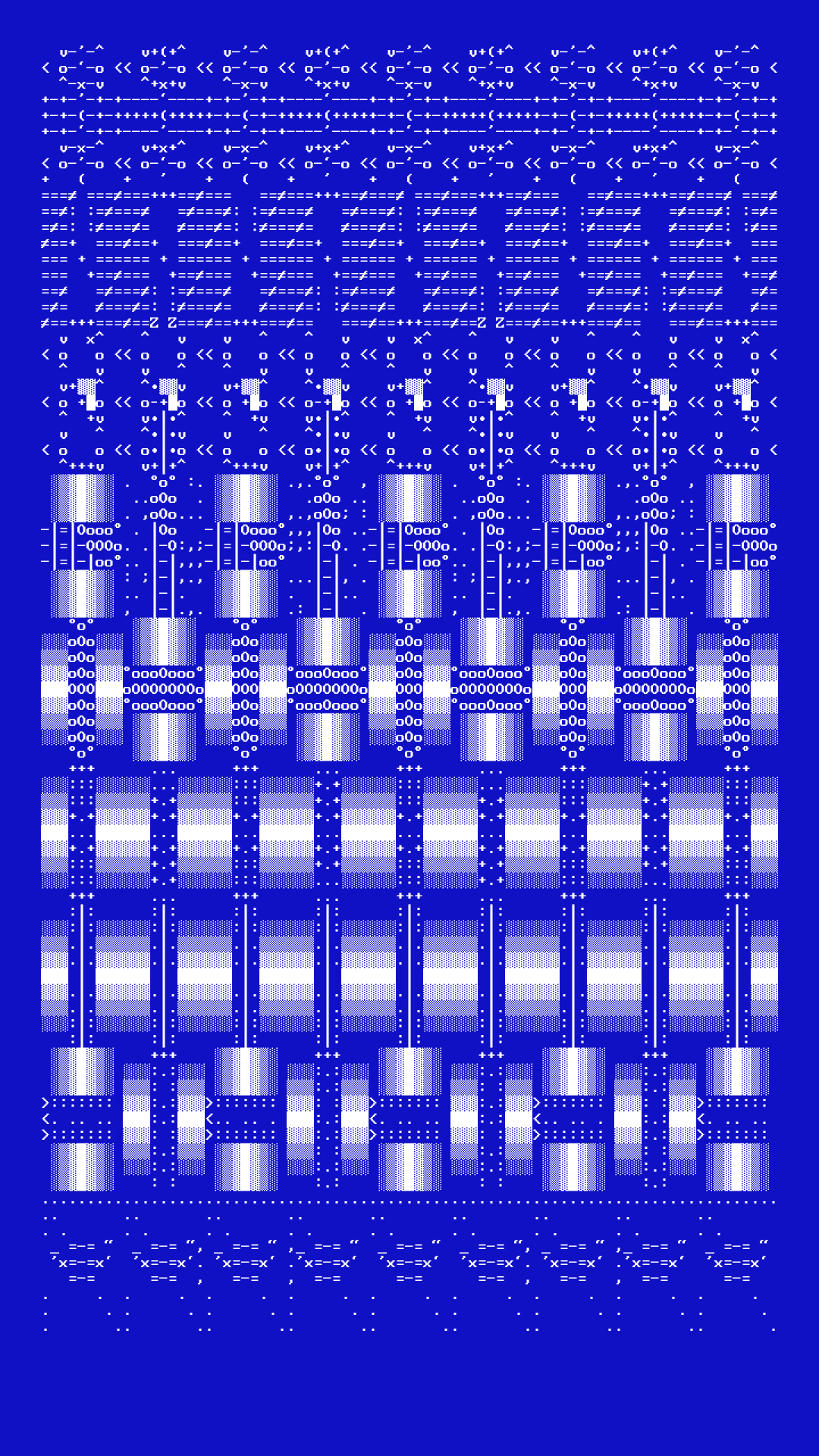
Materialized: A Verse Exhibition
The “Materialized” Verse Exhibition (27 June – 1 July 2023) by Andreas Gysin and Sidi Vanetti is a vivid demonstration of the power of collaboration in the art world alongside the ability to combine digital technologies with physical media, in particular, their ability to marry industrial and urban signage with digital technologies. Each piece in this exhibition is not just a display of artistic skill but a deeper exploration of the computer as an artistic medium, resulting in a body of work that is inherently digital.
64 Pixels: This piece, part of the Matrices series, shows how limitations can spark creativity. The artists used a 64-pixel LED panel to explore the potential within these confines, creating compositions that are both complex and visually compelling. A perfect example of Gysin and Vanetti’s ability to transform industrial objects into works of art, with the physical component’s limitations acting as a catalyst for creativity.
Recursive Tile: Also from the Matrices series, “Recursive Tile” expands on the idea of “64 Pixels” by incorporating the concept of recursion within a 64×64 pixel canvas. This approach results in larger, intricate compositions made from smaller 8×8 tiles. The versatility of this artwork is remarkable, as it can be displayed across various devices and settings, highlighting its adaptability and digital nature.
Wayfinder: As a real-time generative piece, “Wayfinder” stands out as a 2.5D experiment, creating an ongoing stack of 2D shapes. It draws from a prior visual exploration for a science fiction film, where futuristic languages and signage systems were envisioned. This background has influenced the development of “Wayfinder”, showcasing a layering concept reimagined through efficient coding.
Six Letters: This work is a unique blend of technology and language, using six alphanumeric split-flap elements to display the most common six-letter words in the English language. The arrangement is optimized using an approximation of the traveling salesman algorithm, making it a captivating and intellectually engaging experience for the viewer.
Red-Green: This piece consists of bichrome cross-shaped LED modules, assembled and controlled via custom software. Each edition of “Red-Green” displays a unique layout and orientation of LED elements, demonstrating Gysin and Vanetti’s respect for the vintage origin of these components by choosing not to solder them. This choice allows for the preservation of the original elements’ authenticity.
Digits: A physical artwork (2014–2023) composed of 36 electro-mechanical elements, “Digits” uses ‘7-segment displays’ to create a visually striking installation. The programming of these elements results in a dynamic, wave-like motion, accompanied by the distinct sound of solenoids activating the blades. This piece exemplifies the integration of industrial components into art, where functionality merges with aesthetic appeal.
VFD CUU: This artwork utilizes vacuum fluorescent displays, a technology common in the 70s. Gysin and Vanetti repurpose these displays to create abstract compositions from a limited series of Latin and Japanese characters, turning a functional item into a medium for artistic expression.
This Materialized exhibition stands as a testament to Gysin and Vanetti’s belief that art is an ever-evolving conversation between the artist, the medium, and the viewer, inviting us to rethink our perception of digital art through a physical lens — bringing technology and contemporary artistic expression into dialogue.

The AGH1 Project: Computer Aesthetics in Perspective
Similarly, the AGH1 project, a collaboration between Andreas Gysin, Kim Asendorf, and Leander Herzog, debuted on December 7th, 2023, marking a significant chapter in the evolution of contemporary digital art — a confluence of shared philosophies and a commitment to exploring the intrinsic properties of digital mediums.
AGH distinguishes itself through a conceptual framework that prioritizes the computer not merely as a tool, but as the central subject of artistic exploration. The trio’s collective approach revolves around the glorification of digital technology, not through narrative overlays, but by showcasing the inherent properties of the medium. This methodology elevates the raw, unprocessed aspects of digital art, presenting it in an unvarnished, transparent manner.
This approach is further reflected in the group’s preference for kinetic and interactive art forms. AGH1’s creations are dynamic, constantly in motion, challenging the static nature of traditional art. This dynamism underscores the potential of digital mediums to transcend conventional artistic boundaries, offering an experiential dimension that static art forms cannot provide.
One of the key aspects of AGH’s philosophy is the adaptability and flexibility of their art. Their creations are designed to be displayed across a spectrum of digital platforms, from handheld devices to expansive LED walls. This versatility speaks to the transient nature of digital art, where the mode of display becomes an integral part of the artistic experience, reshaping the relationship between the artwork and its audience.
Andreas Gysin in Conversation with Fakewhale
Fakewhale: Let’s start from the beginning. Can you share a bit about your early artistic career and what initially drew you to installations?
Andreas Gysin: During the final year of my graphic-design studies I responded to a call for an installation in a public space during a two-week festival in the city of Fribourg. At that time I was working for a project that involved Nokia as a client and I was exploring ways to communicate with SMS. I sent the project idea to the festival and it got selected: the project was produced and it was installed in the city. This project, which involved live and public SMS messaging, toured several cities. I greatly appreciated the diverse feedback it received from different countries and cultures. Soon after, a curator (Riccardo Lisi) contacted me and Sidi Vanetti and asked if we wanted to do an installation in a newly built cultural center near Locarno… For two years, we would create a new installation for the center every month. We focused mostly on interactive installations that engaged directly with the audience. We learned a lot and understood the relationship between a piece, the context and the audience. The budget was also very limited (basically zero) and we had to work the way around several limitations. I still consider these two years a very important training for both of us…!
Fakewhale: Your portfolio showcases a broad spectrum of work, from kinetic installations to digital sculptures and animations. What drives your exploration across these different mediums, and how do you find they interact or inform one another?
Andreas Gysin: I believe this attitude towards work can be traced back to the more pragmatic design-context: every new project requires new ideas and a new starting point; having a “style” was considered a limitation during our studies and following style (or fashion) was not a proper response to the wide range of problems we had to handle. I think that I still carry this mindset with me: this is the thread that unites all these projects, beyond the medium and the formal choices.
Fakewhale: When and why did you first decide to transition from physical installations to digital, and subsequently back to physical?
Andreas Gysin: I didn’t consciously make this decision. Alongside my physical works, I have always written programs and experiments that are designed and programmed to run exclusively on computer screens and/or browsers.
Fakewhale: Your longstanding collaboration with Sidi Vanetti has resulted in a multitude of innovative installations, both digital and physical. Can you share how your collaborative creative process works, especially when transitioning between digital and physical mediums? How do your individual artistic visions and styles complement each other?
Andreas Gysin: We met at school and we mostly ignored each other during the academic years. Our first collaboration dates back to the final diploma project as we shared the same interests (we were both exploring visual perception and how “meaning” is formed in the mind of kids). As mentioned above we started to work on a series of installations for this local institution… but we also got our first job in the same design studio: we spent a lot of time together working on design projects and also on more experimental things. Sidi is conceptually rigorous, ensuring no weak points in our projects. He also has an absurd and surreal perspective, which helps in connecting seemingly disparate aspects of an idea or topic. We spend a lot of time discussing and drawing.

Fakewhale: Your work often employs industrial and urban signage and displays, using them as either starting points or final pieces. How do these elements influence the translation of your digital concepts into physical forms?
Andreas Gysin: When we work with existing elements (mechanical or digital displays, pre-existing shapes like urban signage, etc.) we try to come up with an idea that can only work with these elements: the use of a display should not be generic but specific; in a certain way it’s the display or the device or the signage that decides what we should do with it. The concept of the work is born from there.
Fakewhale: The recent Materialized Verse exhibition showcases your mastery of the screen-as-a-canvas concept, navigating between digital and physical realms with a consistent theme of pixelation. How do you perceive the ‘pixel’ as a bridge between these realms, and how does this perception shape your work in projects like 64 Pixels and Recursive Tile?
Andreas Gysin: For Materialized, we chose to exhibit seven projects with seven different display techniques: a mechanical split-flap display, a mechanical 7 segment display, a VFD display, several LED displays, a daytime video projection, a digital print, a cross-shaped vintage LED assembled into a custom matrix.
We intentionally excluded the common LCD TV monitor as a response to the saturated exhibitions in the NFT context.
The “pixel” is the atom of several screens but in many of the displays listed above there is not even a pixel: the smallest unit is a “flap” element, a fluorescent character, a “blade” or some exotic LED element bought in an electronic store in Shanghai. I’d say that we work with these atomic elements… of course when we work with screens or LED matrices then we deal with actual pixels.
Fakewhale: In “64 Pixels”, you embraced the limitations of the hardware as a creative catalyst. How do constraints, whether technological or material, foster innovation in your digital and physical artworks?
Andreas Gysin: This is again the attitude of the (graphic-) designer in me (us) that needs an entry point for the project: a project is defined by its constraints. We embrace them; I’d even say that we require them to start a project.
Fakewhale: Given the blend of digital and physical mediums showcased in Materialized, how do you foresee the future of digital art, especially in terms of exhibitions and audience interactions?
Andreas Gysin: With NFTs entering the public domain, we could observe the birth of a new kind of group-shows in galleries and museums: you’d enter an exhibition and the space was filled with works that seemed selected randomly and displayed close-by on vertical or horizontal TVs, often with black bars on the sides. These kinds of showcases looked very amateurish even within the most “professional” or traditional environments. I’m obviously generalizing but I think, perhaps I hope, that we’ll see less of this kind of mediocrity in the future as curators, but also the audience, are getting more aware.
Fakewhale: The recent AGH1 marked a new chapter. Could you elaborate on the genesis and shared vision that brought you, Kim Asendorf, and Leander Herzog together?
Andreas Gysin: We knew each other through our work and we met for the first time a few years ago in London. All three of us have strong opinions, which we often share in lengthy video calls or chat rooms. We quickly realized that our vision on how to present our work to the public was aligned and that we could probably try something together. Leander and Kim were already planning an event together and finally I joined them and so AGH1, an acronym of our surnames, was born.
Fakewhale: AGH1 is a synthesis of different artistic styles and technological approaches. How do these diverse elements combine in this collective’s work, and what are some key outcomes from this collaboration?
Andreas Gysin: The formal and technical approaches may be different but the attitude towards the work is very similar: our projects are “self-contained” and don’t have a conceptual over-structure or a hidden narrative; everything is there to be seen and experienced.
The main outcome was our first show that we had last December in an incredible venue in Berlin: AGH 1 was held at Funkhaus and we decided to present our works on a single LED wall during an evening. As our first collaboration as a trio (Lenny and Kim had previously worked together) it was also a test-run; I’m happy to say that it worked very well and as a result there will be more to come from us.
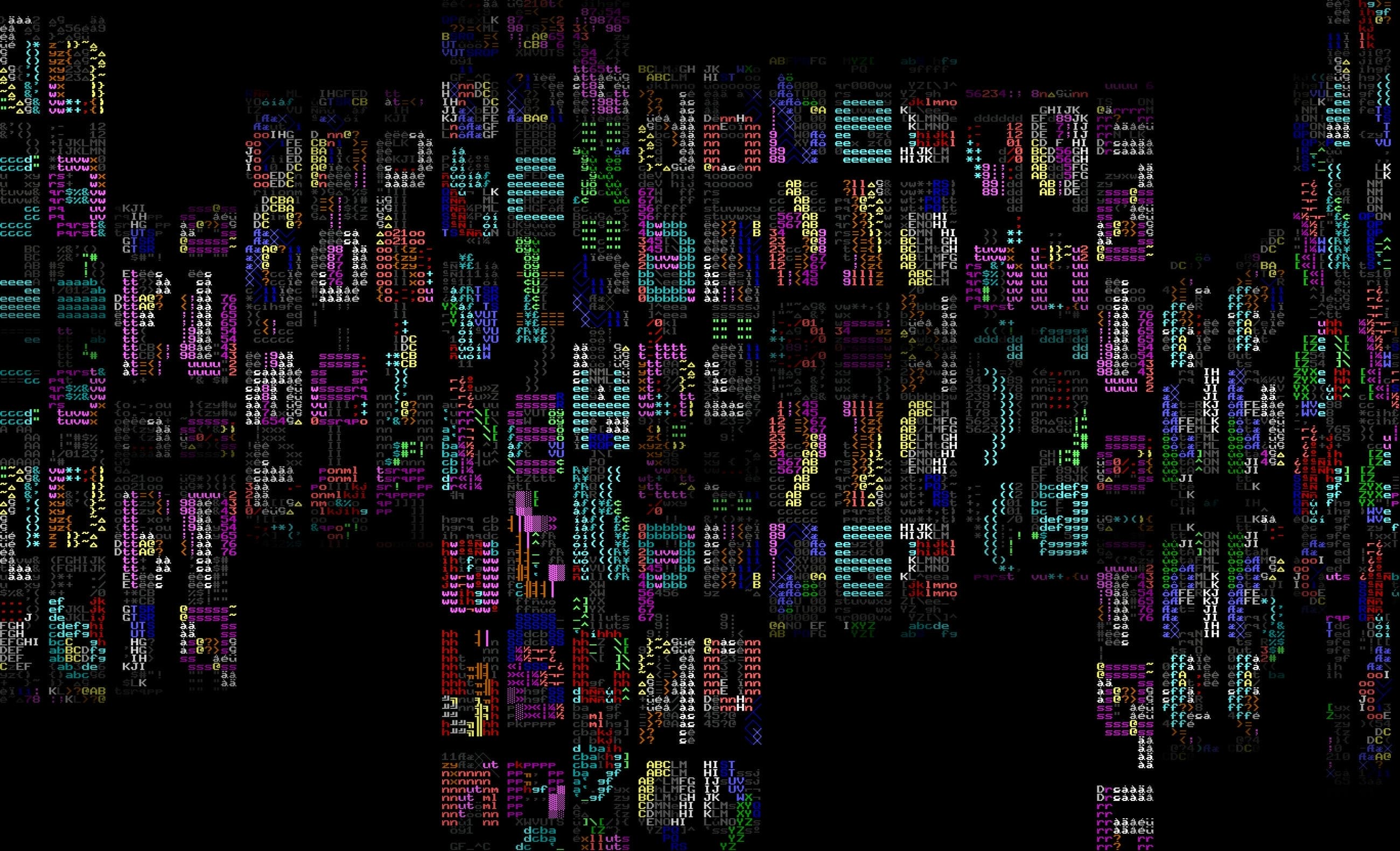
Digital Threads in a Physical Loom: Decoding Gysin’s Artistic Blueprint
Gysin’s artistic progression is emblematic of an artist not only understanding, but shaping the fluid landscape where digital and physical mediums overlap.
The cyclical nature of his career, moving between tangible installations and digital expressions, underlines a critical understanding: that art is an evolving dialogue, ever-responsive to the changing tides of technology and cultural context.
This narrative is not just about the transition from one medium to another but about the very synthesis of these forms — Gysin’s work, particularly in recent collaborations like AGH1 and long-term ones like with Sidi Vanetti, showcases how art can bridge the gap between the digital and the physical, creating a symbiotic relationship that enhances the potential of both.
Ultimately, Gysin reveals how the true power of art nowadays lies not in choosing between the digital and the physical, but in combining them to reveal new dimensions of creative expression.
fakewhale
Founded in 2021, Fakewhale advocates the digital art market's evolution. Viewing NFT technology as a container for art, and leveraging the expansive scope of digital culture, Fakewhale strives to shape a new ecosystem in which art and technology become the starting point, rather than the final destination.
You may also like
Fakewhale Presents REFLECTIONS: A WUF Basel Collective Press Showcase
As Basel gears up for the WUF press-only event scheduled for June 11-12 at Bar Rouge, Messepl. 10, a
Nico Vascellari: “Pastorale” at Palazzo Reale, Milan
“I remember swallowing a cherry pit as a child…” From this very first line, Nico Vascellari in
YOSHIROTTEN: Overflow and Motion in a Hyper-Optimized World
Japanese artist YOSHIROTTEN operates at the intersection of fine art, design, digital media, and imm


